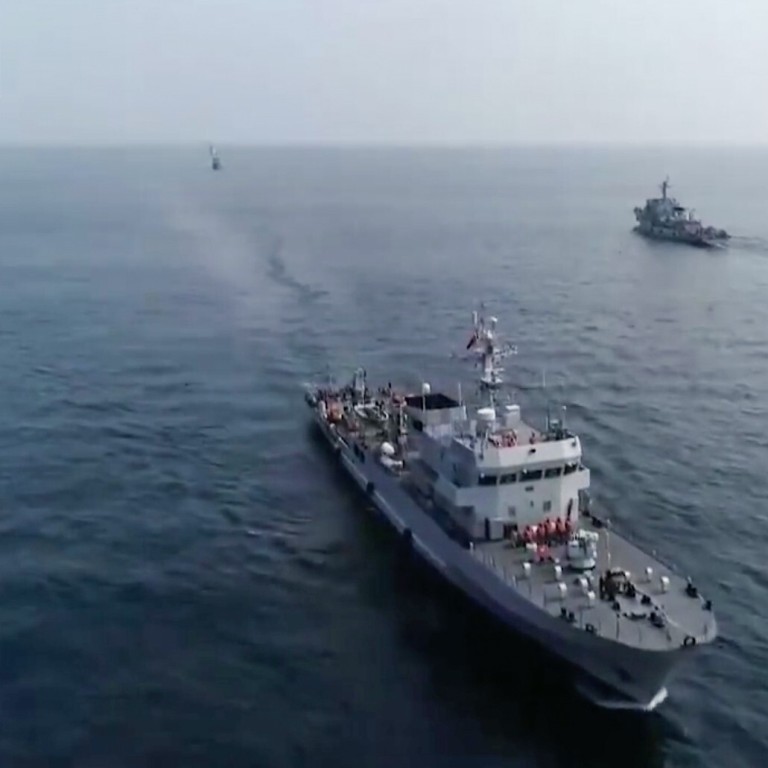
Chinese military steps up anti-mine drills as Taiwan builds sea defences to thwart invasion
- Taipei is investigating heavily in hi-tech asymmetric defences in the hope of delaying landings long enough for the US to come to its aid
- Recent mainland Chinese drills were designed to test the PLA’s ability to counter these underwater weapons
In two recent naval exercises conducted by the PLA’s Eastern and Southern theatre commands, the military’s mine sweepers and minehunters played important roles in helping the flotillas clear sea lanes from underwater mines, state-run China Central Television reported.
Taiwanese President Tsai Ing-wen visits military base after PLA ‘provocations’
The anti-mine training comes as the PLA steps up its island encirclement drills by sending fighter jets and warships into the Taiwan Strait at a time when the island’s authorities are growing closer to the United States.
Beijing, which regards the island as a breakaway province and has never renounced the use of force to bring it back into its fold, has accused Washington and Taipei of promoting independence.
Taiwan has been buying torpedoes from the US and also trying to improve its minelaying abilities as a way of hampering any PLA attempt to land forces on the island, according to Lu Li-Shih, a former instructor at the naval academy in Taiwan.
Lu said the strategy was designed to buy more time for the US Navy and its allies in the region to intervene.
“If the PLA tries to attack Taiwan, it will definitely be an asymmetric battle … one of the best measures the Taiwanese military can take is to lay underwater mines along Taiwan’s shores and major channels connecting the mainland and the island to hinder the PLA fleet’s approach,” Lu said.
He said different mines were designed for different purposes. For example, drifting mines were to attack surface ships and moored mines for submarines while “the most deadly” was a smart rising mine.
The rising mines, which were usually laid in deep water with a floating payload, could release torpedoes when the system detected enemy ships passing, Lu added.
Last month, Hsiao Bi-khim, Taiwan’s most senior envoy to the US, told the Washington-based think tank the Hudson Institute that Taipei was looking to buy underwater mines and cruise missiles to boost its coastal defences, according to Reuters.
Taiwan military to allow forces to fire back after mainland Chinese air incursions
On August 4, Taiwan launched its first locally constructed fast minelayer, underscoring Taiwanese President Tsai Ing-wen’s commitment to strengthening its domestic defence capabilities.
In her inauguration speech at the start of her second term in May, Tsai said her number one priority was to boost Taiwan’s asymmetric defence capabilities.
Macau-based military observer Antony Wong Tong said developing advanced mine sweepers and hunters had been a major goal for the PLA to ensure to could fulfil its reunification agenda.
“The PLA has had painful experiences clearing up all mines laid by Taiwan since 1949 [when the defeated Nationalists fled to the island at the end of the civil war] because of a lack of advanced detecting equipment in the beginning,” Wong said.
The CCTV report on the East China Sea exercise said that the flotilla had carried out an anti-mine operation over several days that effectively detected and cleared underwater mines.
Wong added: “Now the PLA has sophisticated robots and underwater drones to help detection operations, with the fully automatic Type 082-class minehunters shown by the CCTV reports being part of the evidence.”

